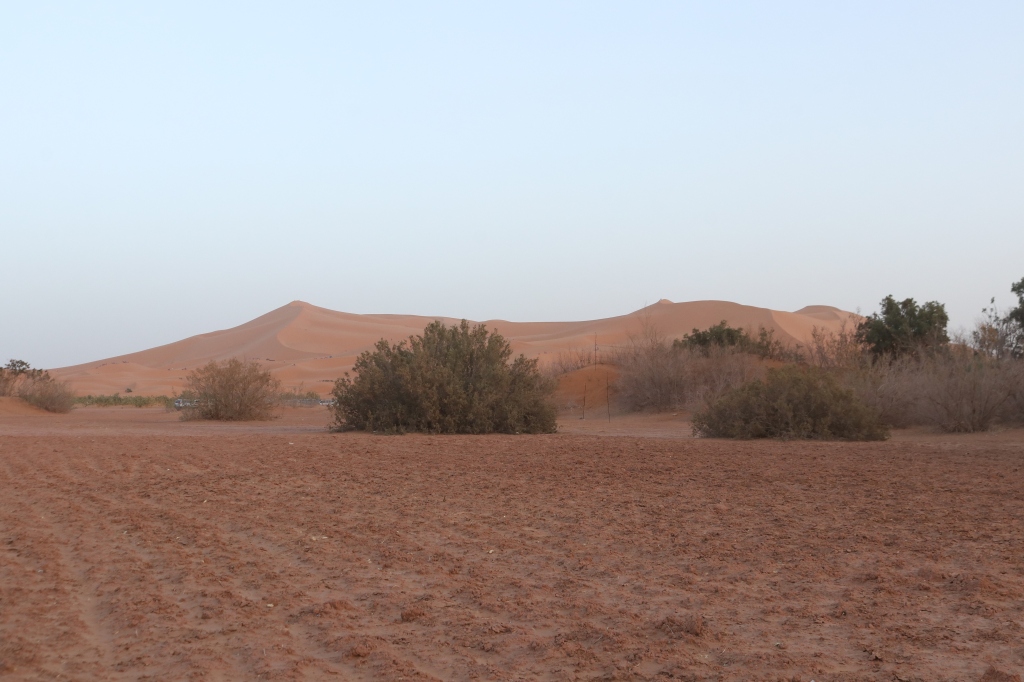Last Sunday, 10th March, a new spring ringing season started at Yasmina. We will be here ringing daily (as long as the weather allows us!) for two months, covering a big part of the spring migration of many birds on their way north. Usually, the beginning of March is rather slow in terms of captures at the site. But if we have learnt something with all the years here is that the captures are rather unpredictable, and that some seasons are, for some reason, way better than others (and, well, trying to figure this out is one of our main interests!).

The first three days of this season have been way better than expected, already with a good migration passage, with totals of 40, 62 and 27 new birds respectively (10th, 11th and 12th March). As you can see here, these numbers are way over the average captures for these days. It’s way too early to state wether this will be a better spring for migration than previous years or if this is just a coincidence, but we will keep informing!
As usual in March, the commonest species so far is the Western Subalpine Warbler Curruca iberiae (59 ringed the first 3 days), followed by Woodchat Shrike Lanius senator (19 ringed the first 3 days) and Western Bonelli’s Warbler Phylloscopus bonelli (9 ringed). These three are in fact some of the most common migrants at Yasmina every spring.
Yet the few days since the start, we’ve already had some interesting findings. For instance, yet Desert Wheatears Oenanthe deserti can be seen and do breed in Merzouga area, they are usually quite localised to specific areas and not seen regularly outside those (like for instance in our study site). For some reason, though, this year we are observing several of them in uncommon places, like in Yasmina, where we even caught one: the last one trapped here was more than 10 years ago!
This male Western Black-eared Wheatear Oenanthe hispanica makes a nice comparison too. Among other first captures for the season, we also had the first Nightingale Luscinia megarhynchos, Northern Wheatear Oenanthe oenanthe, two Desert Grey Shrikes Lanius excubitor elegans and a Scops Owl Otus scops!



Another interesting observation from this year is the rather abundant passage of Iberian Chiffchaffs Phylloscopus ibericus in the area, including 7 ringed the first 4 days, and several more detected in other areas nearby.

We’ll keep informing from the edge of the Sahara! It’s also worth noting that we had few reservations this year to visit the ringing station and there is still plenty of time to do so if you are interested. Check for more information on the pages of this blog and don’t doubt to contact us!
El diumenge passat, 10 de març, vam començar una nova campanya d’estudi de la migració dels ocells a Yasmina. Anellarem cada dia (si el temps ens ho permet!) durant els propers dos mesos, cobrint així bona part de la migració de primavera. Normalment, a principis de març encara hi ha poc pas i poques captures, però si una cosa hem après amb tots els anys aquí és que és força imprevisible i que algunes temporades són, per algun motiu, més bones que altres (i bé, intentar esbrinar els motius d’això és un dels nostres interessos principals!).

Els primers tres dies de la campanya han sigut molt millors del que esperàvem, amb bona migració i uns totals de 40, 62 i 27 primeres captures respectivament (dies 10, 11 i 12 de març). Tal i com podeu veure al link del primer post de la pàgina, les captures d’enguany són de moment ben superiors a la mitjana de captures per aquestes dates. Això potser és només una coincidència, però seguirem informant del que anem trobant aquests dies, esperem que els bons números continuin!
Com és habitual al març, les espècies més comunes han sigut el tallarol de garriga Curruca iberiae (59 anellats els primers 3 dies), seguits pels capsigranys Lanius senator (19 anellats els primers 3 dies) i mosquiters pàl·lids Phylloscopus bonelli (9 anellats). Aquests tres són de fet de les espècies més comunes que anellem cada primavera.
Tot i els pocs dies ja hem trobat també algunes coses menys habituals. Per example, tot i que els còlits del desert Oenanthe deserti es troben per la zona de Merzouga i també hi crien, són geenralment força específics amb l’hàbitat i es troben de forma força localitzada, sent per example molt escassos a Yasmina. Per alguna raó, enguany n’estem veient forces i a molts llocs on és poc habitual, inclús a Yasmina, on fins i tot en vam capturar un preciós mascle adult. Cal anar més de 10 anys enrere per trobar el darrer que es va anellar aquí!
Aquest mascle de còlit ros Oenanthe hispanica de la foto superior quedava molt bé per comparar les dues espècies. Entre altres primers captures per la temporada, també hem anellat el primer rossinyol Luscinia megarhynchos, còlit gris Oenanthe oenanthe, dos botxins del desert Lanius excubitor elegans i un xot Otus scops!



Una altre dada interessant d’enguany és el pas relativament abundant de mosquiters ibèrics Phylloscopus ibericus a la zona, amb 7 exemplars anellats durant els primers 4 dies, i diversos més detectats a zones properes.

Seguirem informant des del límit del desert! Alhora, animem a tothom a qui li interessi venir de llegir-se les pàgines d’aquesta web i/o a contactar-nos per a fer-nos una visita: de moment tenim pocs voluntaris/ies aquesta campanya i seguim oberts a tothom a qui li interessi!





